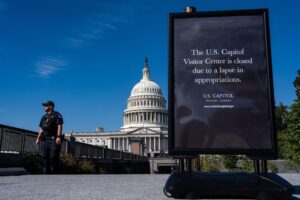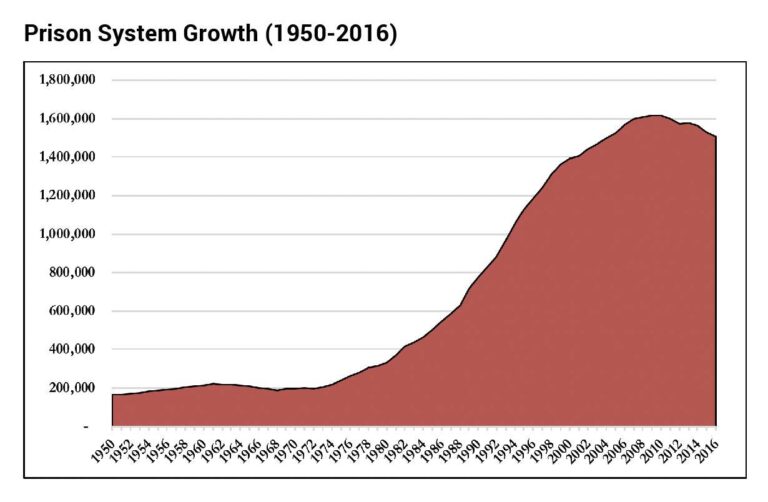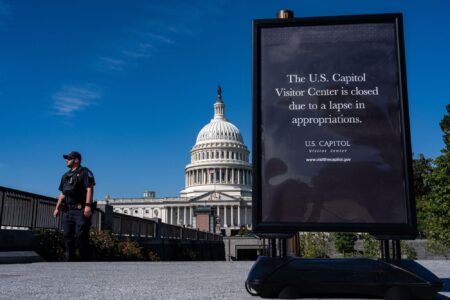Examining the United States’ Unprecedented Incarceration Crisis: Causes, Consequences, and Pathways to Reform
America’s Prison Population: A Global Outlier
The United States stands apart as the country with the highest incarceration rate worldwide, a phenomenon that has significant repercussions across social, economic, and political spheres. Recent analyses, including those reported by The Washington Post, reveal that the U.S. imprisons over 600 individuals per 100,000 residents—more than four times the global average of approximately 145 per 100,000. This stark contrast prompts critical examination of the nation’s criminal justice framework, sentencing policies, and the socio-economic dynamics that perpetuate such elevated imprisonment levels.
Several pivotal elements contribute to this disparity:
- Rigid sentencing mandates that curtail judicial flexibility
- High incarceration rates for non-violent offenses, especially drug-related crimes
- Systemic racial and economic disparities disproportionately impacting minority populations
- The influence of private prison enterprises incentivizing higher incarceration rates
| Nation | Incarceration Rate (per 100,000 people) |
|---|---|
| United States | 639 |
| Canada | 114 |
| United Kingdom | 139 |
| Germany | 77 |
| Japan | 41 |
Ripple Effects: How Mass Imprisonment Reshapes Society and Economy
The consequences of mass incarceration extend well beyond prison walls, deeply affecting families, communities, and the national economy. In communities with high imprisonment rates—often marginalized and economically disadvantaged—family units are frequently destabilized. Children with incarcerated parents face emotional trauma and economic hardship, which can perpetuate cycles of disadvantage and social instability. Additionally, individuals with criminal records encounter significant barriers to employment, housing, and social integration, which fuels recidivism and hinders community rebuilding.
From an economic standpoint, the financial toll is immense. The U.S. government dedicates tens of billions of dollars annually to sustain its correctional system—resources that could alternatively support education, healthcare, or workforce development initiatives. For context, consider the following state-level budget allocations:
| Sector | Annual Expenditure (in billions) |
|---|---|
| Corrections | $80 |
| Higher Education | $70 |
| Public Health | $65 |
Beyond direct costs, the societal fallout includes:
- Elevated poverty levels in communities heavily impacted by incarceration
- Diminished social cohesion and trust among residents
- Strained social services attempting to support affected families
These challenges underscore the necessity for a justice system that emphasizes rehabilitation and community investment over punitive measures alone.
Root Causes Behind America’s Elevated Prison Population
The United States’ high incarceration rate stems from a complex interplay of legislative, social, and economic factors that disproportionately affect vulnerable populations. The enactment of mandatory minimum sentencing laws and the aggressive “War on Drugs” policies initiated in the 1980s have significantly contributed to the surge in prison admissions, particularly for non-violent drug offenses. These laws often restrict judges’ ability to tailor sentences, resulting in longer prison terms and overcrowded facilities.
Moreover, underlying societal issues exacerbate incarceration trends. Persistent poverty, inadequate educational opportunities, and limited access to mental health and addiction treatment services funnel many individuals into the criminal justice system. The table below outlines key drivers and their impacts:
| Factor | Effect | Relevant Statistic |
|---|---|---|
| Mandatory Minimum Sentences | Extended Prison Terms | 80% of drug offenders subject to these laws |
| Economic Disparities | Higher Crime Incidence | 30% greater incarceration in impoverished areas |
| Substance Dependency | Frequent Reoffending | 60% of inmates report addiction issues |
| Mental Health Deficiencies | Insufficient Treatment | 25% of prisoners diagnosed with serious mental illnesses |
- Reforming Sentencing: Critical to curtail excessive incarceration durations.
- Investing in Communities: Tackling root socio-economic challenges.
- Enhancing Healthcare Access: Prioritizing mental health and addiction services.
Strategic Reforms to Combat Overincarceration
Mitigating the overincarceration crisis demands comprehensive reforms that blend legislative changes with community-focused initiatives. Emphasizing alternatives to imprisonment—such as restorative justice programs and broadened parole options—can effectively reduce prison populations while maintaining public safety. Revisiting and revising mandatory minimum sentencing, especially for non-violent crimes, is essential to reverse the trend of mass incarceration.
Addressing systemic inequities is equally vital. Recommended policy actions include:
- Expanding mental health and addiction treatment services to address underlying causes of criminal behavior
- Increasing funding for education and vocational training to disrupt cycles of poverty and reduce repeat offenses
- Promoting transparency and accountability within law enforcement and judicial systems to combat discriminatory practices
| Policy Focus | Proposed Change | Anticipated Impact |
|---|---|---|
| Sentencing Reform | Abolish mandatory minimums for non-violent offenses | 20% reduction in new prison admissions |
| Community-Based Programs | Support restorative justice initiatives | 15% decrease in recidivism rates |
| Mental Health Services | Increase access to treatment and support | Lower incarceration rates among mentally ill populations |
Conclusion: Navigating the Path Forward
The United States’ unparalleled incarceration rate presents a profound challenge to the nation’s ideals of justice and equity. As the social and economic ramifications continue to unfold, it is imperative that policymakers, advocates, and communities engage in informed, data-driven discussions to reshape the criminal justice system. By addressing the root causes and implementing targeted reforms, the U.S. can move toward a more just, effective, and humane approach to public safety and rehabilitation.







